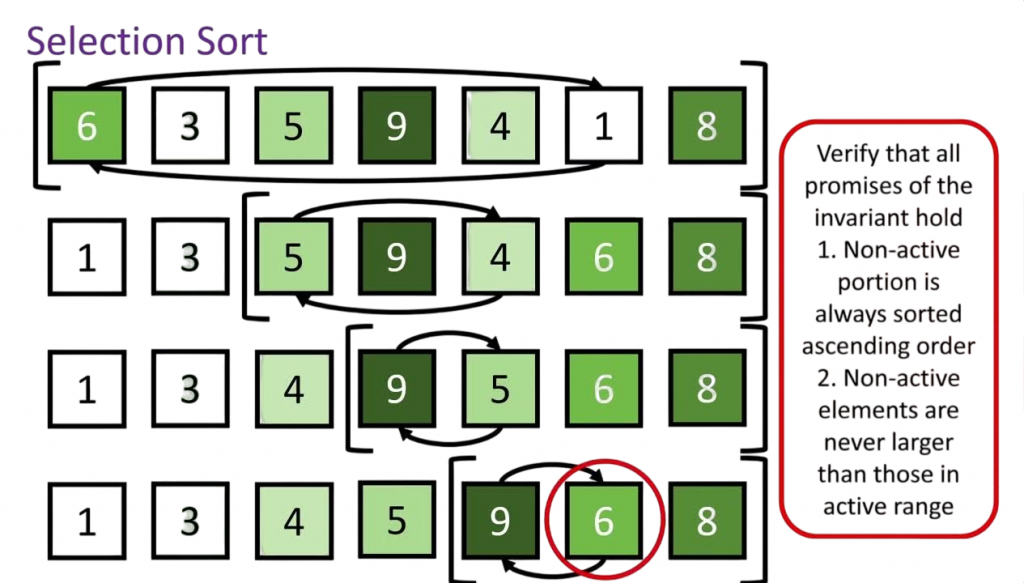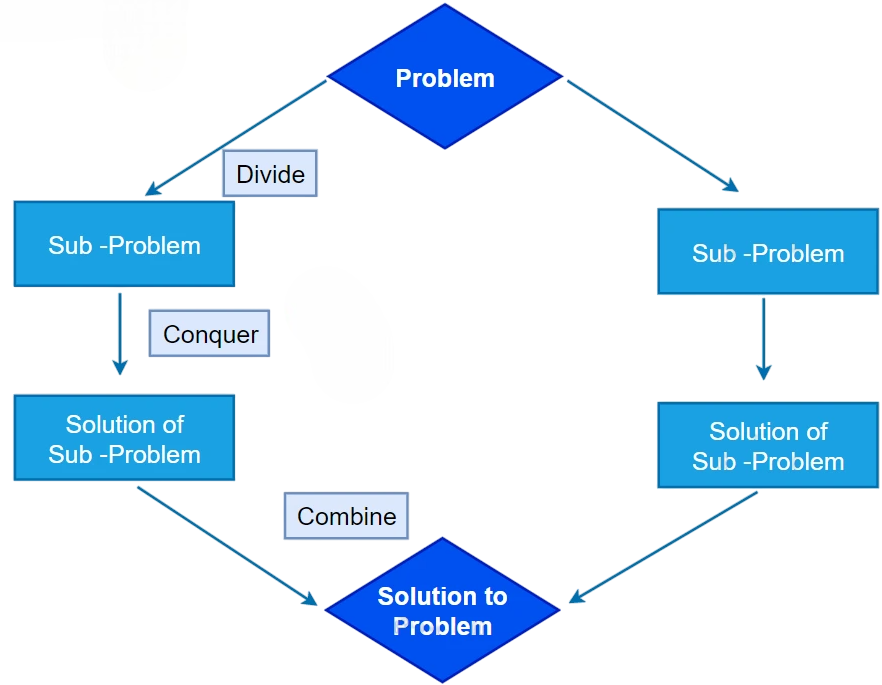
- Introduction to Sorting Algorithms
- What is Selection Sort Algorithm?
- How to Selection Sort Algorithm Works
- Pseudocode for Selection Sort
- Selection Sort with Example (Dry Run)
- Implementation in C, C++, Java, and Python
- Time & Space Complexity Analysis
- Comparison with Other Sorting Algorithms
- Advantages and Disadvantages of Selection Sort
- Use Cases and Practical Applications
- Summary
Introduction to Sorting Algorithms
Sorting is a foundational concept in computer science, where elements in a collection like an array or list are arranged in a particular order. Typically, the order is numerical (ascending or descending) or lexicographical (alphabetical). Sorting algorithms are critical in various domains including databases, search algorithms, and data analysis. To complement such foundational algorithmic knowledge with practical development expertise, exploring Web Developer Training equips learners with the skills to build efficient, data-driven web applications covering HTML, CSS, JavaScript, and backend technologies that support real-time sorting, filtering, and dynamic content rendering. There are many types of sorting algorithms such as Bubble Sort, Insertion Sort, Merge Sort, Quick Sort, and Selection Sort. Sorting improves the efficiency of searching operations (especially binary search) and provides an organized view of data. Based on their complexity and efficiency, different sorting algorithms are chosen depending on the problem requirements.
To Earn Your Web Developer Certification, Gain Insights From Leading Web Developer Experts And Advance Your Career With ACTE’s Web Developer Courses Today!
What is Selection Sort Algorithm?
Selection Sort is a comparison-based sorting algorithm that divides the input list into two parts: the sublist of items already sorted and the remaining sublist of items to be sorted. It repeatedly selects the smallest (or largest, depending on the order) element from the unsorted sublist and moves it to the sorted sublist. To complement such step-by-step sorting logic with collaborative development practices, exploring Git and Version Control introduces essential tools for tracking changes, managing branches, and coordinating code across teams ensuring consistency, traceability, and streamlined workflows in modern software projects. The key principle behind selection sort is selection, finding the smallest (or largest) element from the unsorted part and placing it at the correct position in the sorted part.
How to Selection Sort Algorithm Works
Let’s consider an array of size n. Here’s how selection sort progresses: To complement such step-by-step algorithmic understanding with practical development expertise, exploring Web Developer Training equips learners with the skills to build structured, efficient web applications covering HTML, CSS, JavaScript, and backend technologies that reinforce logical thinking and real-world implementation.

- Step 1: Start with the first element. Find the smallest element in the array and swap it with the first element.
- Step 2: Move to the second element. Again, find the smallest element in the unsorted part (excluding the first element now) and swap it with the second element.
- Step 3: Repeat this process for all positions until the array is sorted.
- First Pass: Find the minimum (10), swap with 29 → [10, 29, 14, 37, 13]
- Second Pass: Find the next minimum (13), swap with 29 → [10, 13, 14, 37, 29]
- Third Pass: Minimum is already at correct position → [10, 13, 14, 37, 29]
- Fourth Pass: Find min (29), swap with 37 → [10, 13, 14, 29, 37]
- Sorted Array: [10, 13, 14, 29, 37]
- procedure selectionSort(array A):
- n = length(A)
- for i = 0 to n – 1:
- minIndex = i
- for j = i + 1 to n:
- if A[j] < A[minIndex]:
- minIndex = j
- swap A[i] with A[minIndex]
- i = 0 → Find minimum between indices 0-4 → min = 11 Swap 64 and 11 → [11, 25, 12, 22, 64]
- i = 1 → Find min between 1-4 → min = 12 Swap 25 and 12 → [11, 12, 25, 22, 64]
- i = 2 → Find min between 2-4 → min = 22 Swap 25 and 22 → [11, 12, 22, 25, 64]
- i = 3 → Already in order → [11, 12, 22, 25, 64]
- i = 4 → Sorted.
- void selectionSort(int arr[], int n) {
- for (int i = 0; i < n – 1; i++) {
- int min_idx = i;
- for (int j = i + 1; j < n; j++)
- if (arr[j] < arr[min_idx])
- min_idx = j;
- int temp = arr[min_idx];
- arr[min_idx] = arr[i];
- arr[i] = temp;
- }
- }
- void selectionSort(vector<int>& arr) {
- int n = arr.size();
- for (int i = 0; i < n – 1; i++) {
- int min_idx = i;
- for (int j = i + 1; j < n; j++)
- if (arr[j] < arr[min_idx])
- min_idx = j;
- swap(arr[i], arr[min_idx]);
- }
- }
- void selectionSort(int[] arr) {
- int n = arr.length;
- for (int i = 0; i < n – 1; i++) {
- int min_idx = i;
- for (int j = i + 1; j < n; j++)
- if (arr[j] < arr[min_idx])
- min_idx = j;
- int temp = arr[min_idx];
- arr[min_idx] = arr[i];
- arr[i] = temp;
- }
- }
- def selection_sort(arr):
- n = len(arr)
- for i in range(n):
- min_idx = i
- for j in range(i + 1, n):
- if arr[j] < arr[min_idx]:
- min_idx = j
- arr[i], arr[min_idx] = arr[min_idx], arr[i]
- Best Case O(n²): Even if the array is already sorted, selection sort still compares every pair.
- Worst Case O(n²): In the worst case, we still perform n*(n-1)/2 comparisons.
- Average Case O(n²): The time complexity remains quadratic regardless of input order. Selection sort always performs the same number of comparisons, but the number of swaps is minimized compared to bubble sort.
- Bubble Sort does more swaps but is stable. To complement such algorithmic behavior with real-world development roles, exploring What Is a Software Developer provides insight into the responsibilities of designing, coding, and testing.
- Insertion Sort is faster on nearly sorted data and stable.
- Merge Sort is faster but requires extra space.
- Quick Sort is faster on average but not stable.
- Simple to understand and implement.
- Requires no additional memory.
- Performs well on small datasets.
- Less number of swaps compared to bubble sort.
- Inefficient on large lists.
- Time complexity is always O(n²), even if the list is already sorted.
- Not a stable sort relative order of equal elements may be changed.
- Embedded systems with very limited memory where simplicity is valued.
- Teaching basic algorithm design due to its simplicity and step-by-step logic.
- Datasets with costly write operations, as it minimizes the number of swaps.
Would You Like to Know More About Web Developer? Sign Up For Our Web Developer Courses Now!
Visual Example:
Given the array: [29, 10, 14, 37, 13]
Pseudocode for Selection Sort
Here is a simple pseudocode for the selection sort algorithm: To complement such step-by-step algorithmic logic with scalable architectural thinking, exploring What are Microservices introduces a modular approach to application development where loosely coupled services handle distinct functionalities, enabling faster deployment, fault isolation, and efficient resource management across distributed systems.

The algorithm keeps selecting the minimum value from the unsorted part and placing it at the beginning of that part, growing the sorted region by one on each iteration.
Are You Interested in Learning More About Web Developer? Sign Up For Our Web Developer Courses Today!
Selection Sort with Example (Dry Run)
Let’s do a dry run with an array: [64, 25, 12, 22, 11]
Implementation in C, C++, Java, and Python
C
C++
Java
Python
Time & Space Complexity Analysis
Time complexity
Space complexity
Selection sort has a space complexity of O(1) because it is an in-place sorting algorithm. It doesn’t require any extra memory for sorting, it modifies the original array. It performs O(n) swaps at most, which is better than Bubble Sort that can make up to O(n²) swaps. To complement such algorithmic efficiency with versatile coding skills, exploring What is Python Programming introduces learners to a high-level, interpreted language known for its readability, dynamic typing, and broad applicability from data analysis and automation to web development and machine learning.
Comparison with Other Sorting Algorithms
| Algorithm | Time Complexity | Space Complexity | Stability | In-place |
|---|---|---|---|---|
| Selection Sort | O(n²) | O(1) | No | Yes |
| Bubble Sort | O(n²) | O(1) | Yes | Yes |
| Insertion Sort | O(n²) | O(1) | Yes | Yes |
| Merge Sort | O(n log n) | O(n) | Yes | No |
| Quick Sort | O(n log n) avg | O(log n) | No | Yes |
Key Differences:
Advantages and Disadvantages of Selection Sort
Advantages:
Disadvantages:
Use Cases and Practical Applications
While not suitable for large datasets, selection sort is useful in:
It’s rarely used in production environments, but useful for understanding algorithm behavior and trade-offs. To complement such foundational insights with practical data structure mastery, exploring Need To Know About Python List offers a comprehensive guide to one of Python’s most versatile containers covering syntax, methods like append(), sort(), and pop(), and best practices for building efficient, readable code.
Summary
Selection Sort is a simple sorting algorithm. It finds the smallest element from an unsorted list and swaps it with the first element. It has a time complexity of O(n²) and uses O(1) space. This makes it less efficient for large lists. One of its main features is that it is not a stable sorting method, which means it can change the order of equal elements. Even though it is not efficient for big datasets, Selection Sort is easy to implement and understand. To complement such foundational algorithmic knowledge with practical development skills, exploring Web Developer Training equips learners with hands-on experience in building responsive websites and full-stack applications covering HTML, CSS, JavaScript, and backend technologies aligned with industry standards. This makes it a good option for small datasets or teaching.





